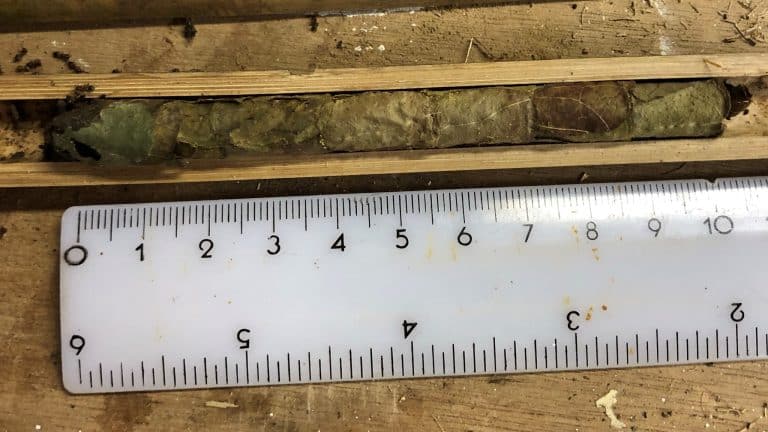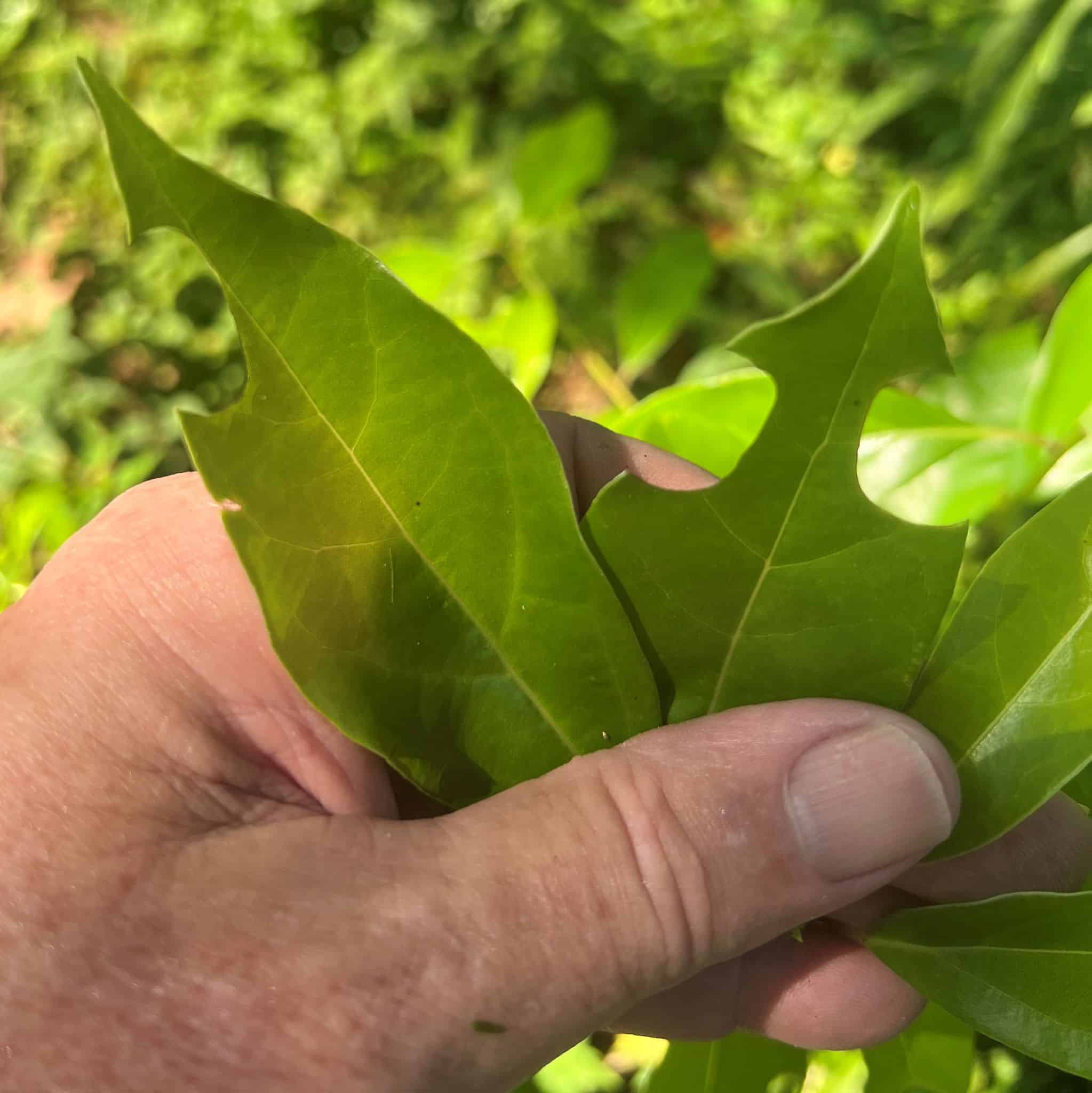Have you ever noticed nearly perfect round holes in leaves and wonder what made them? Well, wonder no more, for you have proof that leafcutting bees are nearby. These small industrious bees have evolved to cut and weave these excised pieces of leaves to make their nest.
Other than catching a glimpse of one of these bees cutting away at a leaf, finding a nest is not likely. Nest are typically made in linear cavities, like the hollow stems of plants or in logs, where the female bee glues dozens of her plant circles to create tubes within which she creates multiple cells with a larva in each.
When you do encounter one, it looks like a well wrapped cigar. That was the case when a couple of great friends and I conducted an experiment with bamboo tubes of different diameters to see if any of our common cavity nesting wasps and bees have a preference for the size of the holes within which they make their nest. I have also seen leafcutting bee nests inserted between pieces of stacked lumber.
 Leafcutting bees collect pollen to provision each of the cells of their nest. In the southeastern U.S., there are as many as 60 or more species of leafcutting bees, so this is apparently a successful lifestyle. There is certainly no shortage of leaves out there for them to use.
Leafcutting bees collect pollen to provision each of the cells of their nest. In the southeastern U.S., there are as many as 60 or more species of leafcutting bees, so this is apparently a successful lifestyle. There is certainly no shortage of leaves out there for them to use.
Apart from their unique use of leaves to form their nests, leafcutting bees are part of the diverse community of pollinators that service the many flowering plants in our world. Some species are used as commercial pollinators in crops, hosted in trailers with multitudes of tubes that are placed adjacent to fields of blueberries or alfalfa, especially in the western U.S.
Spotting these bees in action is a challenge, but with patience, it is possible. Look for small, dark bees that are flitting about the vegetative parts of plants with large leaves. A bee that lands on a leaf and begins to bite down is a sure sign of one. But don’t blink, because they can cut out a circle in no more than 30 seconds or so. I barely got my phone out recently to catch one in action before it flew off with its prize.
These small bees can of course also be seen at flowers, but so are the many other similar-looking bees. They tend to have what appears to be flattened abdomens, but identification is not as important as simply watching them work hard to collect what they need.
 Checking out the leaves of your yard plants is a great challenge, to see if you can spot the near-perfect circles that leafcutting bees have left for you to find.
Checking out the leaves of your yard plants is a great challenge, to see if you can spot the near-perfect circles that leafcutting bees have left for you to find.
Hope to see you in our great outdoors!




